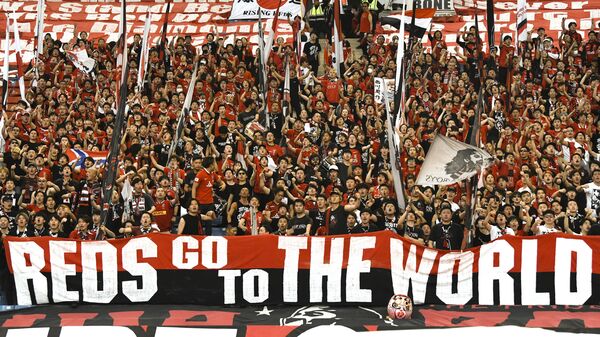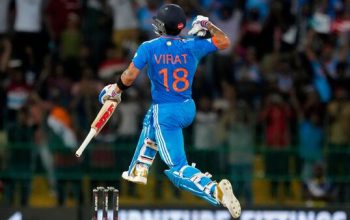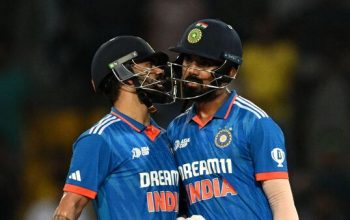The Champions League, in Europe, is the pinnacle of club football. Such is its prestige that other regional associations have affixed “Champions League” to their equivalent competitions as a way to entice fans. But in Europe it is not just the moniker that captivates them. When Manchester City take on Real Madrid in one of the semi-finals next month, viewers will witness a contest between footballing giants, the world’s best and fourth-best teams, according to rankings compiled by Opta, a sports-statistics company. In contrast, the first leg of the Asian Champions League final on April 29th is a Lilliputian affair, between the 101st- and 249th-ranked sides, Al-Hilal of Saudi Arabia and Urawa Red Diamonds of Japan.
The gulf between European and Asian football is wide, but Japan and Saudi Arabia are determined to narrow it. Both countries are already the cream of Asia (which for footballing purposes includes much of the Middle East); their clubs are among the best in the region. Al-Hilal are the Asian Champions League’s most successful side, and have won the tournament four times, including last year. Urawa Reds have won it twice. The national teams qualify regularly for World Cups and, at the most recent edition in Qatar, recorded famous wins. Saudi Arabia shocked Argentina, the eventual winners, in the group stage. Japan upset Germany and Spain, two other heavyweights. To become more successful, though, they are taking strikingly different paths.
“Japan’s Way”, as the country’s football association calls its development strategy, is multi-pronged and meticulous. Drawing on European examples, it concentrates on strengthening four pillars: the national team, youth football, the quality of coaches and the grassroots game. Clubs are required to run youth academies; there are even prescriptions for the type of player they should produce. Once known mostly for their hard work, Japanese players must now also possess “high-level technique”, “one-touch passing skills” and attacking intensity. The Samurai Blue, as the national team is called, have reached the last 16 of the World Cup four times. The association’s aim is for the side to win by 2050.
The Saudi approach is blunter. It, too, has vowed to invest in youth football as it seeks to break into the world’s top 20 by 2034 (it is now 54th). But the Gulf state also sees football as a tool to increase its influence in the region and the world. Sceptics call its initiative sportswashing. Regardless of the motive, billions are being invested in the game. In 2021, for instance, the Saudi sovereign wealth fund bought Newcastle United. The English side has flourished under its new owners. And Saudi football may be benefiting too. Last year Newcastle travelled to Saudi Arabia during a mid-season break to play a match against Al Hilal.
Saudi Arabia is also spending money to bring European football closer to home in other ways. On January 16th Barcelona defeated their bitter rivals Real Madrid in the Spanish Super Cup final—played in the King Fahd International Stadium in Riyadh. The Italian Super Cup took place at the same venue two days later. Al-Nassr, a Saudi team, are reportedly paying Cristiano Ronaldo, a Portuguese superstar, around $200m a year—the highest wages in football. And the splurge is not limited to players. On April 18th Michael Oliver, an English referee, was flown to Riyadh to officiate at a match in the Saudi Pro League.
The countries’ distinct approaches are visible on the pitch. The Saudi league is richer and features bigger names. Around 25% of its players are foreigners; in Japan’s J1 League, 15% are. According to transfermarkt.com, a website that estimates footballers’ market price, the average player in the Saudi league is worth around $700,000; his counterpart in Japan is worth $500,000. Teams that spend more do better. Opta’s data show that the four best teams in Asia are all from Saudi Arabia.
Yet this form of financial largesse can hinder long-term development. Foreign players in Saudi Arabia tend to be fading stars. Mr Ronaldo, for example, is 38. The Saudi league is more retirement home than finishing school. And the riches offered by local clubs mean that few Saudis venture abroad to compete in tougher European leagues. Indeed, every player in the team that beat Argentina in the World Cup played professionally at home. In contrast, Japan’s 26-man World Cup squad featured just four players from its domestic league.
Japanese football is much more export-orientated, and Europe is a grateful consumer. In England, Kaoru Mitoma, a winger at Brighton & Hove Albion, has lit up the Premier League. Takefusa Kubo and Daichi Kamada, of Real Sociedad and Eintracht Frankfurt respectively, have had similar effects in Spain and Germany. All of them are technically gifted players moulded to the football association’s ideal. They have helped propel Japan up to 20th in the world rankings.
Many more are in the pipeline. The push to inculcate a deep football culture means that there are now 60 professional clubs across the four levels of the country’s league system, and many more amateur ones below them. That creates a football pyramid similar in size to many European countries’. Combined with Japan’s 126m people, it provides a vast talent pool. By slotting into European football’s supply chain, Japan is hoping to create a virtuous cycle. As more Japanese players succeed abroad, the league will attract more interest. That should bring more resources into the domestic game, attract better coaches and get more people to play. It is the surest way to improve quality, but it is a long-term approach: Al-Hilal, with a team featuring Colombian, Nigerian and Peruvian internationals, are expected to beat Urawa Reds.
© 2023, The Economist Newspaper Limited. All rights reserved. From The Economist, published under licence. The original content can be found on www.economist.com
Download The Mint News App to get Daily Market Updates & Live Business News.







